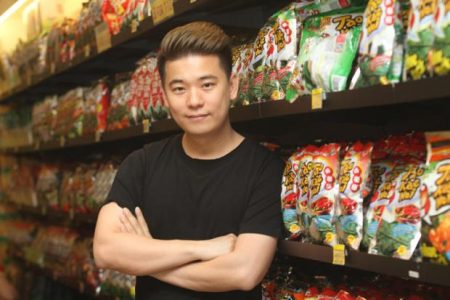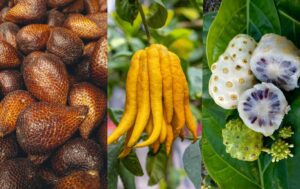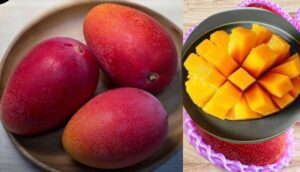 Pin
Pin Photo courtesy of oat-chaiyasith
There’s something delightfully upside-down about a teenager who abandons the very thing adults mortgage their houses to afford—education—all to pursue what most people grab mindlessly at convenience stores. Most seventeen-year-olds facing such a choice would feel the ground shift beneath them, sensing their parents’ silent disappointment settling over the dinner table. But this particular Thai schoolboy examined his options and deliberately chose the path that looked like madness to everyone watching. He decided to sell roasted seaweed when he barely had enough money for the cart itself.
The gorgeous absurdity is precisely what makes this story unforgettable. Seaweed isn’t mysterious or groundbreaking. It’s been wrapped around rice balls and crisped over charcoal for generations, as ordinary in Asian markets as the morning news. Yet this dropout spotted something different in those papery green sheets, the way Alice glimpsed an entire universe through a keyhole. He didn’t simply sell seaweed; he reinvented it, dressed it up in bold new clothes, and somehow persuaded millions of people across dozens of countries that their snack drawers were incomplete without it. That alchemy, turning the everyday into the essential, is where the true enchantment lives.
Table of Contents
The Boy Who Chose Seaweed Over Scholarship
 Pin
Pin Photo courtesy of Bangkok Post
His name was Itthipat Peeradechapan, though everyone calls him “Tob” —a nickname that would eventually appear on snack packets across forty countries. At sixteen, while his classmates worried about exams, Tob was absorbed in online gaming, particularly a game called Everquest where he became so skilled that players worldwide paid him for rare items. By seventeen, he made a decision that horrified his teachers: he dropped out of school to become a chestnut peddler.
This wasn’t youthful rebellion for its own sake. His family was drowning in debt that exceeded 40 million baht, roughly 1.3 million US dollars. The weight of that number would crush most teenagers, but Tob saw it as a puzzle demanding an unconventional solution.
He invested his gaming earnings into selling fried chestnuts, which were quite popular in Thailand at the time. The venture started modestly but grew quickly. He set up a small kiosk inside a Tesco Lotus supermarket, and as he later explained, it was all about location—being close to the cash counter made all the difference. He called his business Tao Kae Noi, meaning “little boss,” a nickname his father had jokingly given him for his entrepreneurial spirit. By nineteen, he’d expanded to thirty locations with fifty employees. But just when success seemed within reach, the rules changed, and his chestnut empire faced an unexpected threat that would force him to pivot toward something nobody expected: seaweed.
When Chestnuts Became Forbidden Fruit
Success, as it turns out, can arrive wearing a disguise that looks suspiciously like failure. Tob’s chestnut business was humming along beautifully, generating impressive revenue for someone barely old enough to drink legally. Then Thailand’s health-conscious officials decided that fried foods in supermarkets were contributing to the nation’s growing obesity problem. New regulations swept through, and suddenly selling fried chestnuts in the spots that made his business work became impossible. It was the kind of setback that would send most entrepreneurs scrambling back to conventional wisdom, perhaps finally enrolling in that university program everyone kept mentioning.
But here’s where Tob’s mind worked differently than most. Instead of mourning his chestnut empire, he started wandering through supermarket aisles, studying what people actually bought. He noticed something peculiar: the snack section was an absolute goldmine, but it was dominated by international brands with their flashy packaging and premium prices. Thai snacks existed, certainly, but they looked homemade and unexciting, tucked away like shy relatives at a party. Seaweed snacks were there too, mostly Japanese imports that cost more than they should. Tob remembered eating crispy seaweed as a child, that satisfying crunch and savory taste. What if he could make it better, package it smarter, and sell it for less? The question planted itself in his mind like a seed, and once there, it refused to leave.
The Seaweed Experiments in a Tiny Kitchen
Tob didn’t have a food science degree or a test kitchen with gleaming equipment. What he had was his mother’s tiny kitchen, a gas stove, and an obsessive need to get the recipe exactly right. Seaweed sounds simple enough—it’s just dried algae that you season and crisp up, after all. But getting it to taste consistently delicious, to have that perfect crunch that doesn’t turn chewy after a few hours, to hold flavor without becoming too salty or too bland, that’s where the real challenge lived. He spent months experimenting, adjusting temperatures, trying different oils, testing various seasonings until his fingers were stained and his mother probably wondered if she’d ever get her kitchen back.
The breakthrough came when he realized that most seaweed snacks failed because they either tasted too healthy, like something your doctor would force you to eat, or they were so aggressively flavored they burned your tongue. Tob found the sweet spot in between, a place where the natural ocean taste of the seaweed came through but was enhanced by just enough seasoning to make it addictive. He tested his samples on everyone he could find, watching their faces as they chewed, noting when they reached for a second piece without thinking about it. That unconscious reach, that automatic hand going back to the packet, was what he was chasing. Once he cracked that code, he knew he had something worth betting everything on. The question was whether anyone else would agree.
The Package That Spoke Louder Than Words
 Pin
Pin Photo courtesy of The Wall Street Journal
Tob understood something that many traditional Thai businesses missed entirely: the wrapper matters almost as much as what’s inside it. Walk through any Thai market and you’ll see homemade snacks in plain plastic bags with handwritten labels, looking exactly like what your grandmother might pack for a school trip. There’s charm in that simplicity, certainly, but there’s no excitement, no reason for a teenager to choose it over a brightly colored imported snack. Tob knew his seaweed could compete with Japanese brands on taste, but if it looked like a homemade afterthought on the shelf, nobody would give it a chance.
He poured his limited budget into packaging design that looked professional, modern, and most importantly, fun. The bags featured bright colors and playful graphics that caught your eye from across the aisle. He added his cartoon mascot, positioned the brand name prominently, and made sure every element screamed quality and personality. When you picked up a Tao Kae Noi packet, it felt like picking up something that belonged next to the international brands, not something apologetically hiding in the local section. This attention to presentation wasn’t vanity or unnecessary expense. It was strategic warfare on the supermarket battlefield, where you have roughly three seconds to convince someone to choose your product over the dozens surrounding it. Tob’s colorful packets were his soldiers, and they were dressed to win.
The Supermarket Gamble That Almost Failed
Getting your product into supermarkets isn’t like setting up a street cart where you’re your own boss. You need to convince buyers who’ve seen a thousand pitches from people who all believe their product is special. Tob walked into those meetings as a teenage dropout with no business degree, no impressive portfolio, just samples of seaweed in eye-catching packages and an earnest belief that he’d figured something out. The buyers were skeptical, naturally. Why would they give shelf space to an unproven local brand when established Japanese companies already dominated that category? But Tob had one advantage: his prices were significantly lower, and his profit margins for retailers were better. He was offering them a product that could sell at half the price of imports while still delivering quality.
The first supermarkets that took a chance on him did so hesitantly, giving him minimal shelf space in locations that weren’t prime real estate. Those early weeks were nerve-wracking. Tob would visit stores personally, watching shoppers pass by his products, resisting the urge to jump out and explain why they should try it. Sales started slowly, the way most honest success stories do, without fireworks or instant validation. But then something shifted. People who bought one packet came back for more. They told their friends. The colorful packaging caught children’s attention, and parents discovered the snacks were relatively healthy compared to chips and candy. Reorders started coming in, and buyers who’d been cautious began asking for more shelf space. The gamble was paying off, one crispy sheet at a time.
The Marketing Move That Broke All the Rules
Most food companies in Thailand at that time followed a predictable playbook: get your product into stores, maybe run some newspaper ads, wait for word of mouth to do the heavy lifting. Tob looked at that approach and decided it was far too slow and far too boring for what he had in mind. He’d grown up with the internet, spent his teenage years in the vibrant chaos of online gaming communities, and he understood something that traditional businesspeople didn’t quite grasp yet: young people didn’t just buy products anymore, they bought stories and personalities they connected with. So he did something that made the established snack companies shake their heads in confusion—he made himself the face of the brand.
Tob started appearing everywhere, giving interviews where he openly talked about dropping out of school and why traditional education wasn’t the only path to success. This was controversial stuff in a culture that deeply valued academic achievement. He wrote a book about his journey while still in his early twenties, turning his unconventional story into inspiration for other young people who felt trapped by expectations. He showed up at universities, the very institutions he’d abandoned, and spoke to students about entrepreneurship. The genius of it was that he became more than a snack seller—he became a symbol of youthful rebellion that still respected hard work and family values. When people bought Tao Kae Noi seaweed, they weren’t just buying a snack. They were buying into a story about a kid who bet on himself and won. That emotional connection, that sense of rooting for the underdog, turned customers into loyal fans who felt personally invested in his success.
When Japan Came Calling
The truly delicious irony of Tob’s success was that Japan, the country whose seaweed snacks he’d been competing against in Thai supermarkets, suddenly wanted what he was selling. Japanese distributors started reaching out, intrigued by this upstart Thai brand that had managed to capture something they’d somehow missed despite their centuries-long relationship with seaweed. They’d been treating seaweed snacks as a traditional, almost nostalgic product, marketing it to adults who remembered eating it as children. Tob had flipped the script entirely, making it cool and contemporary, something teenagers actively wanted rather than something their parents forced on them for health benefits.
Entering the Japanese market felt like walking into the lion’s den wearing a meat suit. This was seaweed’s ancestral home, where standards were exacting and consumers could spot inferior quality from across a room. If Tob failed here, it would validate every skeptic who’d said a Thai dropout had no business competing with established Japanese companies. But he understood that his version offered something different, not necessarily better in the traditional sense, but more aligned with what younger consumers wanted: bold flavors, fun packaging, and a brand personality that felt alive rather than corporate. The Japanese market opened up, and Tao Kae Noi didn’t just survive there—it thrived, proving that sometimes the student can teach the master a few new tricks. That success in Japan became his golden ticket to the rest of Asia and eventually the world.
The Flavors That Defied Convention
Most seaweed snacks stuck to the classics: plain salted, maybe a hint of sesame, perhaps a whisper of wasabi for those feeling adventurous. Tob looked at that limited palette and saw missed opportunity everywhere. He started experimenting with flavors that made purists gasp—spicy Korean BBQ, tom yum, hot chili squid, even cheese. These weren’t subtle variations on a theme; they were bold declarations that seaweed could be a canvas for whatever flavors people craved. The traditional manufacturers thought he was ruining the integrity of the product, diluting something pure with unnecessary gimmicks. But Tob wasn’t trying to please the traditionalists. He was chasing the taste buds of people who’d grown up with global flavors, who saw no reason why a sheet of seaweed couldn’t taste like their favorite Korean dish or their grandmother’s spicy Thai soup.
The flavor experiments did more than just expand the product line—they turned each new release into an event that customers anticipated. People started collecting different flavors, comparing them, debating which was superior the way others might discuss music albums or film releases. The brand developed cult-like followings around specific flavors, with some becoming so popular they’d sell out within days of restocking. This constant innovation kept Tao Kae Noi from becoming stale or predictable, which is death for any food brand. While competitors stuck to their safe formulas, Tob kept surprising people, keeping them curious about what he’d come up with next. That sense of playful experimentation, that willingness to try flavors that might fail spectacularly, became part of the brand’s identity. It signaled that this wasn’t just another snack company following focus groups and playing it safe—this was still that seventeen-year-old dropout, still willing to take risks that made conventional wisdom nervous.
The Empire Built on Crispy Green Sheets
By his mid-twenties, Tob had accomplished what most business school graduates spend decades chasing. Tao Kae Noi wasn’t just a successful local brand anymore—it had become a regional powerhouse with distribution across Asia, expanding into markets as diverse as Singapore, Hong Kong, Malaysia, and even making inroads into European supermarkets where Thai products were still relatively exotic. The company was generating billions of baht in revenue annually, employing hundreds of people, and occupying premium shelf space in stores that had once been hesitant to give him even a corner spot. The boy who’d borrowed money to sell chestnuts was now running a legitimate empire, though he still preferred wearing casual clothes to business suits and maintained an approachability that CEOs twice his age seemed to have surgically removed.
What made his success particularly satisfying was that he’d achieved it without compromising his original vision or selling out to a massive corporation that would strip away everything that made the brand special. He’d received offers, certainly—big international food companies saw the value in what he’d built and wanted to absorb it into their portfolios. But Tob understood that Tao Kae Noi’s magic lived in its story, in the fact that it was still fundamentally connected to that seventeen-year-old dropout who’d bet everything on seaweed. The moment it became just another subsidiary of a faceless conglomerate, that magic would evaporate like morning mist. So he kept control, kept innovating, kept showing up as the face of the brand, proving that you could build something massive without losing the soul that made it matter in the first place.
The Lessons Hidden in Seaweed Wrappers
Tob’s journey offers something more valuable than a business success story—it provides a blueprint for rethinking how we approach risk and opportunity. The conventional wisdom says you finish school, get a degree, build credentials, then maybe, if you’re lucky and cautious, you start something of your own in your thirties when you have a safety net. Tob flipped that sequence entirely, betting on himself at an age when most of us are still figuring out who we are. What made this work wasn’t recklessness or blind luck. He chose a product that people already loved and understood, then found ways to make it better, more accessible, and more appealing. He didn’t try to invent something completely new that required educating the market from scratch. He simply saw value that others had overlooked in something wonderfully ordinary.
The other crucial lesson lives in how he handled setbacks. When regulations killed his chestnut business, he didn’t waste time being bitter or trying to fight the system. He pivoted immediately, treating the obstacle as information rather than catastrophe. That mental flexibility, that ability to see closed doors as invitations to find windows, matters more than any business degree. He also understood instinctively that in modern markets, personality and story matter as much as product quality. People don’t just buy things anymore—they buy from people they feel connected to, brands that represent something they believe in. By making himself visible and vulnerable, sharing his dropout story rather than hiding it, he created emotional bonds with customers that transcended simple transactions. That authenticity, that willingness to be himself rather than what a CEO is supposed to be, turned out to be his most valuable asset.
Where the Little Boss Stands Today
Tob Itthipat now sits at the helm of a company valued in the billions, with Tao Kae Noi products available in over forty countries and continuing to expand into new markets where seaweed snacks were previously unknown. The brand has diversified beyond its original crispy sheets, launching tempura seaweed, seaweed rolls with various fillings, and other innovative products that keep pushing boundaries while staying true to the core identity. He’s become a celebrity entrepreneur in Thailand, a motivational speaker whose story gets shared in business schools despite his own complicated relationship with formal education. His books have sold hundreds of thousands of copies, and he’s invested in other ventures, applying the lessons learned from his seaweed empire to new challenges.
But perhaps what’s most interesting about where Tob stands today is that he hasn’t transformed into the typical billionaire CEO surrounded by walls and assistants. He remains remarkably accessible, still engaging with customers on social media, still showing up at events with that same youthful energy that characterized his early days. The dropout label that once carried shame has become his badge of honor, proof that there are multiple paths to success and that sometimes the most unconventional route leads to the most extraordinary destinations. He’s living evidence that a seventeen-year-old with no credentials, no connections, and no safety net can build something that matters if they’re willing to work obsessively, pivot quickly, and never apologize for seeing the world differently than everyone else around them. The little boss grew up, but he never grew boring.
FAQs
He left school at 16 to sell chestnuts, then pivoted to seaweed at 17 when regulations changed. Both ages appear in his story because his entrepreneurial journey had two distinct chapters! 🎓
He borrowed 30,000 baht (roughly $1,000) from his brother to launch his chestnut business, then reinvested those earnings into developing Tao Kae Noi seaweed snacks. 💰
Not at all! The brand now sells in over 40 countries including Japan, Singapore, Hong Kong, Malaysia, and even European markets. It’s become a genuinely global snack empire. 🌏
It translates to “little boss” in Thai—a playful nickname Tob’s father gave him as a child because of his entrepreneurial spirit. The name perfectly captured his youthful audacity. 👦
Yes! Unlike many founders who sell to corporations, Tob maintained control of his company and remains actively involved, still serving as the brand’s face and driving its creative direction. 🎯


































